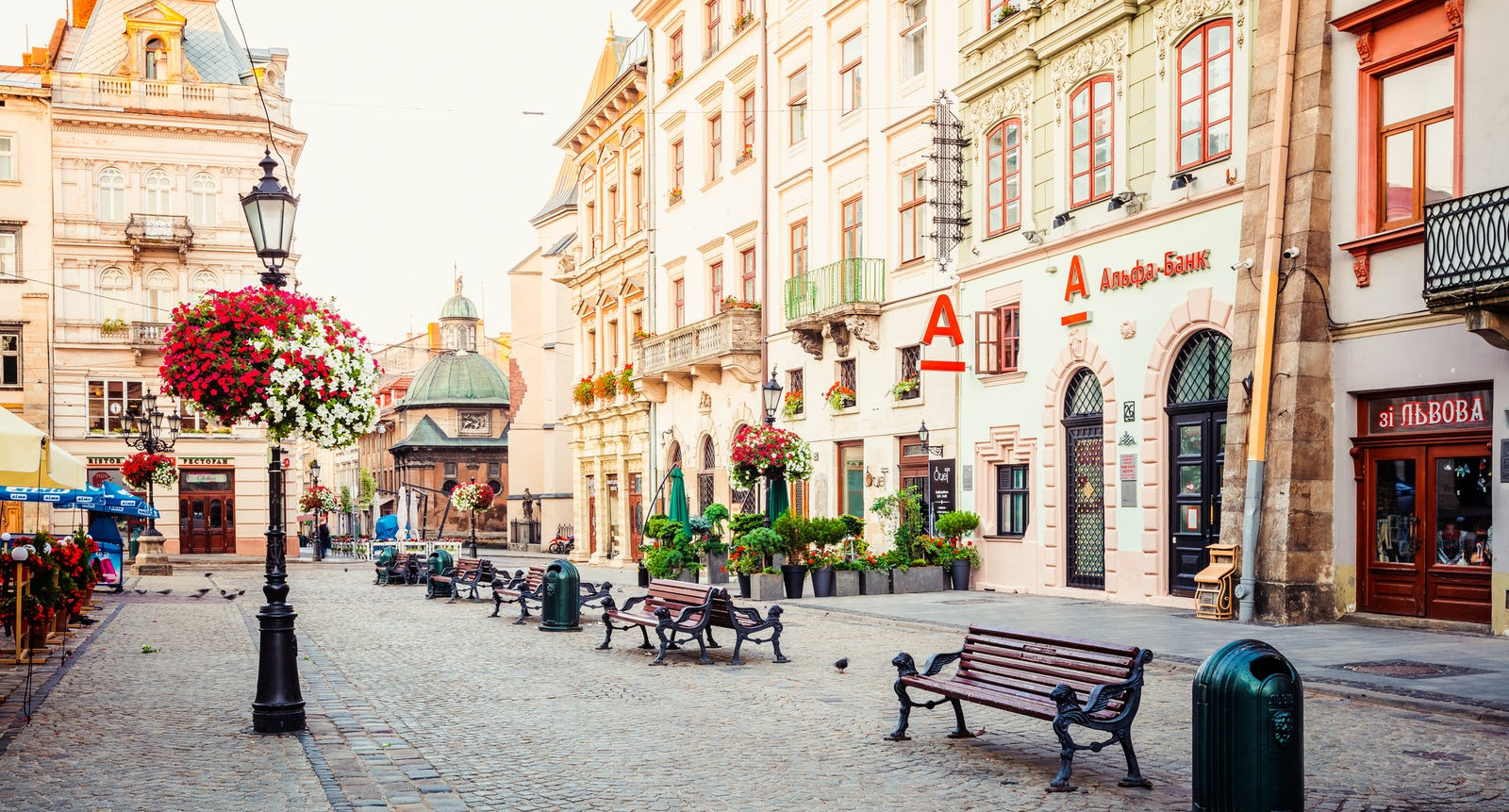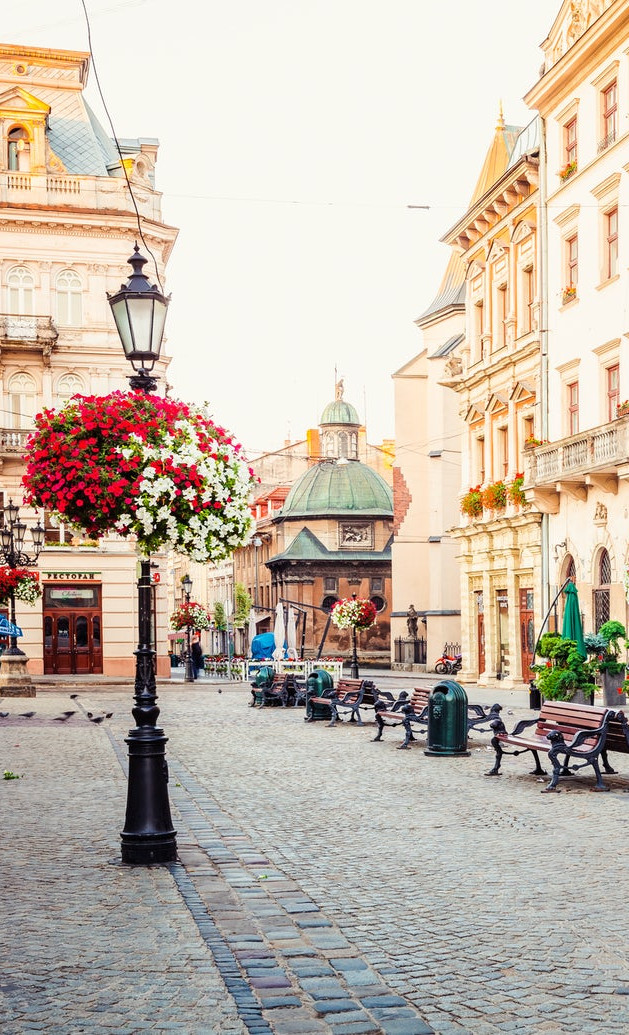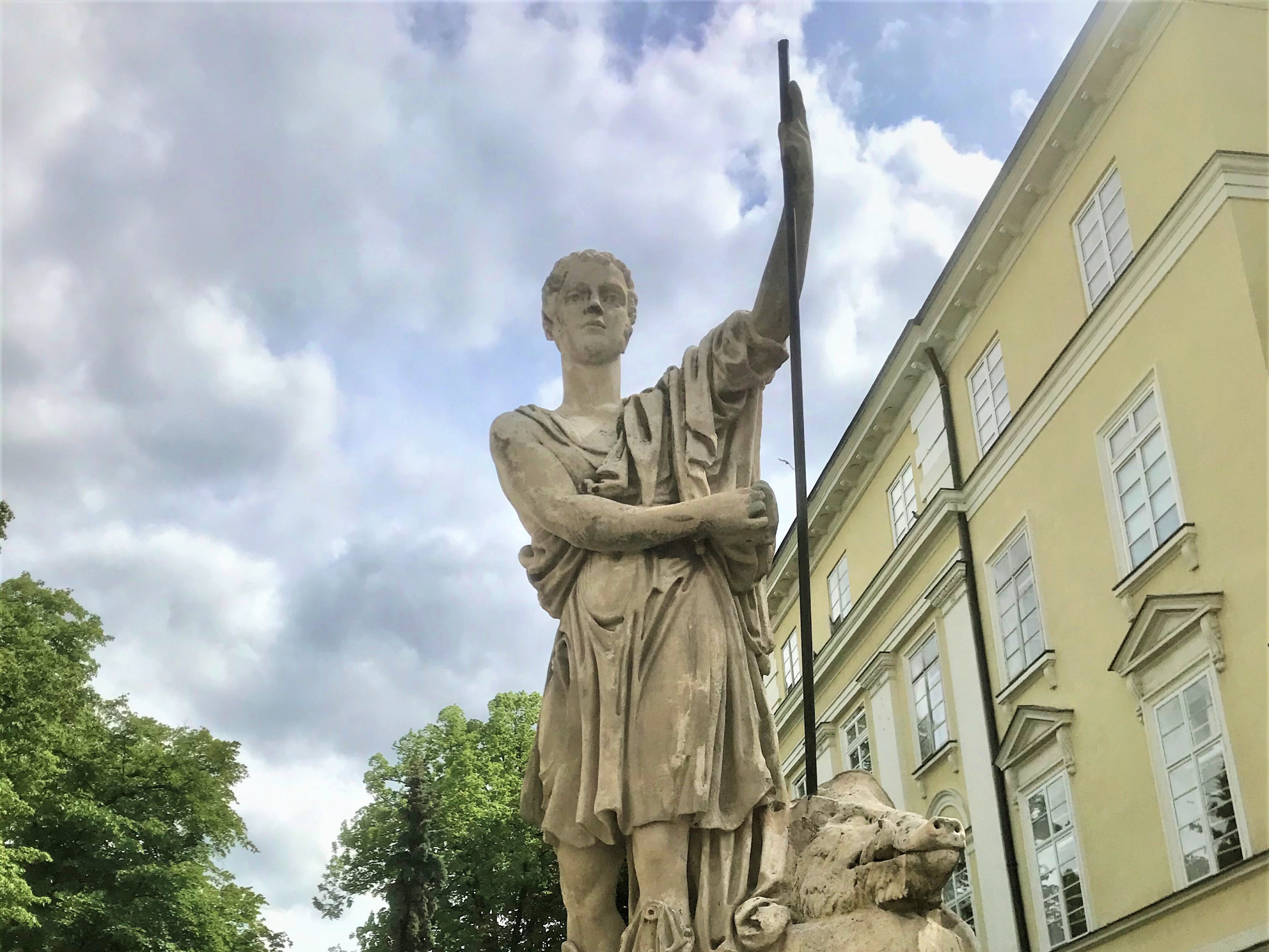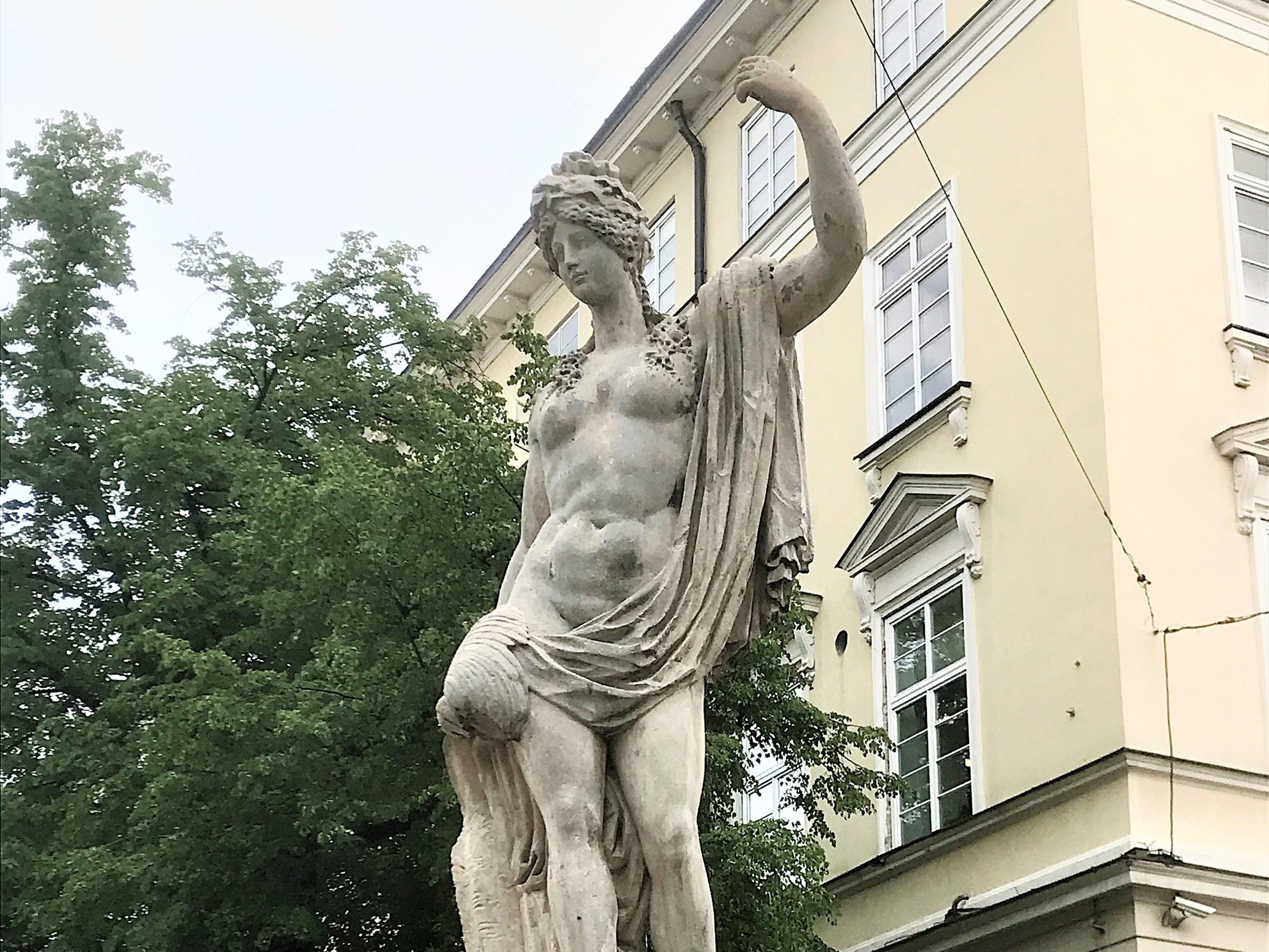The small and cozy Lviv Rynok Square, walking around it, you feel yourself as at home, you don’t feel the
pressure of the houses, you don’t notice the hustle and bustle around, just peace...
You can hear something similar more than once about perhaps the most popular square in Ukraine. Moreover, did you know that the uniqueness of the square in Lviv lies in the fact that it branches into eight full-fledged streets? Now it is not about Rynok Square, but about sculptures, allegorical figures who have been watching the constant variability of fashion, people, and Lviv establishments on Rynok Square for centuries.
Despite the fact that the central part of the city is practically on the water, and Lviv experts call Lviv as
"little Venice" (in the XV century was a pond on the modern Rynok Square, and under part of Svobody
Avenue and other central streets flows the river Poltva), 600 years ago, the city had problems with water
supply. As early as 1407, there is the first mention of a water supply system, through which water from
springs from outside the city came to the locals. The townspeople faced the question of building a water
supply system, which was a difficult and expensive task at that time.
Then in the eastern part of the square, they made a water distribution point "Meluzina" – so named, from a huge bronze statue that decorated this point. Water mains converged on the Meluzina, and from there water was supplied to the houses through wooden pipes. By the end of the XVIII century, there were already 16 water mains. This was the first water supply in the city. However, the reservoir could be used not by everyone, but only by those who had the financial capacity to lay water to their own home.
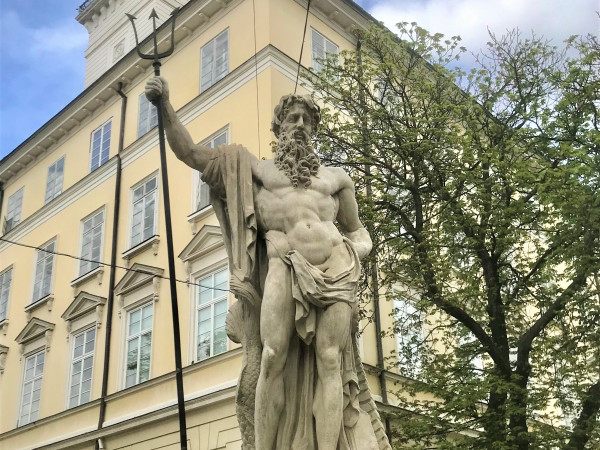
At the end of the XVII century, in 1697, another pond (or well) was built on the southwestern corner of the
square, called Neptune, from a wooden statue of the god of the seas, which was decorated with it.
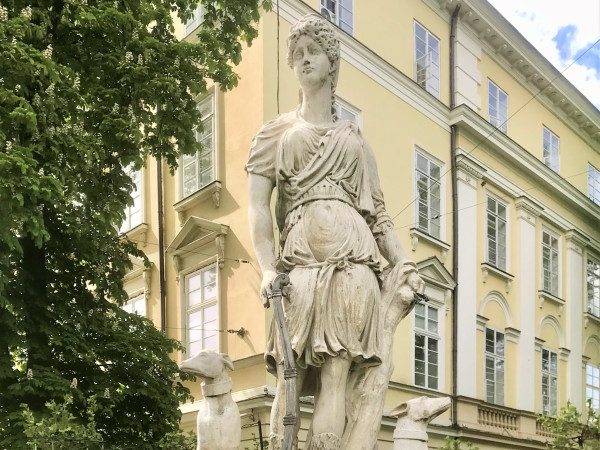
The third reservoir was built in 1744 on the southeastern corner of the square, known today as the "Diana" fountain.
The modern look of the sculptures has adorned Rynok Square for more than two hundred years, and their
author is the Lviv architect of Austrian origin Hartmann Witwer (1774-1825). It is believed that these sculptures are the best works of the artist. Made, according to some sources, in 1810-1814 in the style of classicism relevant at that time.
Undoubtedly, everyone who passed by the fountains at least once wondered: why there were the ancient gods chosen? According to the author's plans, they embodied the allegories of the Earth – the sculpture "Diana" (goddess of hunting and wildlife, femininity) and "Adonis" (ancient god associated with the periodic death and rebirth of nature); and Water – a sculpture of "Neptune" (god of the seas, clouds, rain, and water) and his beloved wife "Amphitrite"(goddess of the seas).

One of the facts related to Lviv fountains
We are talking about the Higer family, a Jewish family that lived in the Lviv sewers for about 14 months during the Nazi occupation of Lviv, which saved them from death.
From the memoirs of Ignacy Higer's daughter, Christina Higer, "The Girl in the Green Sweater", screened in 2011, "In the Dark" ("W ciemności"), they were able to obtain drinking water from a cracked water pipe in the well of the Neptune Fountain.
These are the glorious fountains of Rynok Square!
